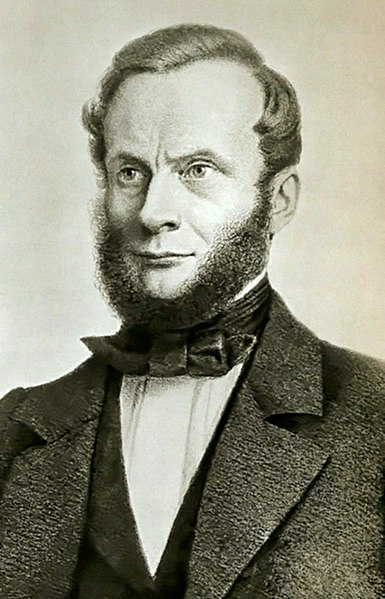Ludwig Eduard Boltzmann was an Austrian physicist and philosopher. His greatest achievements were the development of statistical mechanics, and the statistical explanation of the second law of thermodynamics. In 1877 he provided the current definition of entropy, , where Ω is the number of microstates whose energy equals the system's energy, interpreted as a measure of the statistical disorder of a system. Max Planck named the constant kB the Boltzmann constant.
Ludwig Boltzmann
Ludwig Boltzmann and co-workers in Graz, 1887: (standing, from the left) Nernst, Streintz, Arrhenius, Hiecke, (sitting, from the left) Aulinger, Ettingshausen, Boltzmann, Klemenčič, Hausmanninger
Boltzmann's 1898 I2 molecule diagram showing atomic "sensitive region" (α, β) overlap
Boltzmann's bust in the courtyard arcade of the main building, University of Vienna
Second law of thermodynamics
The second law of thermodynamics is a physical law based on universal empirical observation concerning heat and energy interconversions. A simple statement of the law is that heat always flows spontaneously from hotter to colder regions of matter. Another statement is: "Not all heat can be converted into work in a cyclic process."
Nicolas Léonard Sadi Carnot in the traditional uniform of a student of the École Polytechnique
Rudolf Clausius
James Clerk Maxwell







